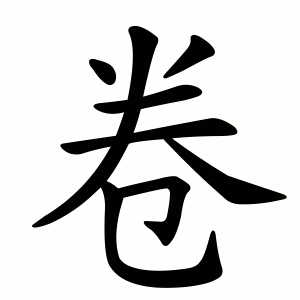卷
- scroll;
- book;
- volume;
- to roll up;
- to curl;
Etymology
A phono-semantic compound:
㔾 (병부 절, “seal/hand”) — semantic element, associated with holding or binding
龹 (밥 뭉칠 권) — phonetic element, providing the sound
Originally meant to roll or curl something up, hence “scroll.” From this, it came to denote:
A scroll or volume of writing (the classical form of a book).
By extension, a unit of written work divided by content.
Usage in Korean
一卷 (일권) — one volume
卷數 (권수) — number of volumes
卷子 (권자) — scroll; exam paper (in classical Chinese usage)
經卷 (경권) — sutra scroll
全卷 (전권) — complete volume
別卷 (별권) — separate volume, appendix
Words that derived from 卷
Alternative forms
In Korean usage, 권 is used both as:
① a counter for books (e.g., 책 3권 “three books”), and
② to denote the volume number within a series.
In Japanese usage, 巻 (kan) refers primarily to the order/volume within a series, not as a counter.
In Chinese usage, 卷 is also the simplified form of 捲 (“to roll up, to curl”), so it carries both meanings.
Classical distinction: 卷 referred to a section of content (like a “chapter”), whereas 冊 referred to the bound object of paper sheets.
- 火手尸山 (FQSU)
- ⿱ 龹 㔾 (G H T)
- ⿱ 𠔉 㔾 (J K V)
